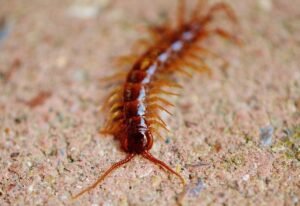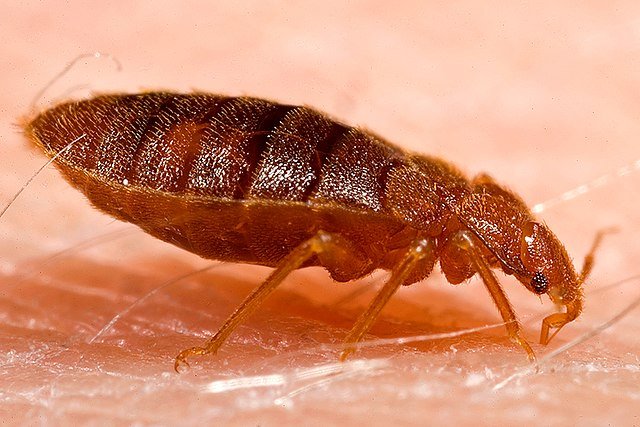 House Centipedes Lifecycle: How Long Do They Live and Should You Worry?
House Centipedes Lifecycle: How Long Do They Live and Should You Worry?
House centipedes lifecycle is strange. They run very fast and scare many people. You may see them in your bathroom at night or running across your basement floor. Their many long legs give them a “hairy” look, which makes them look like something between a spider and an alien. Many people ask: how long do house centipedes live, and should I be worried if I see them inside? This guide explains their lifespan, life cycle, behavior indoors and outdoors, and what it really means when you find one in your home.
What exactly is a house centipede?
The house centipede (Scutigera coleoptrata) is one of the most common centipedes that live inside human homes. It is sometimes called the “hairy centipede” because its thin legs and long antennae make it look fuzzy or spidery. A normal adult has 15 pairs of long legs, a yellow-gray body with darker stripes, and grows about 2.5–5 cm long.
They move very quickly, up to almost half a meter per second, which makes them hard to catch. Unlike cockroaches or ants, they do not eat your food, clothes, or furniture. They are predators that hunt other insects and spiders. For this reason, some people call them a “free pest control service.” Still, many homeowners do not like to share their bathroom with something that looks like a mini monster.
House centipedes first came from the Mediterranean area, but today they are found across the United States, Canada, Europe, Asia, and even parts of Australia. They survive well indoors because houses give them the humidity, warmth, and food they need.
How long do house centipedes live on average?
One of the most surprising facts is the house centipedes lifecycle. While a fly lives only a few weeks and cockroaches live months, house centipedes lifecycle can be three to seven years. This is very long for a household pest.
In good conditions, with enough food and stable climate, they can reach the higher end of that range. Indoors, they usually live longer than outdoors, because they avoid cold winters and hungry predators. This means that the centipede you see in your bathroom may already be a few years old.
House centipedes lifecycle?
To understand the house centipedes lifecycle, it helps to see their life stages.
Eggs: A female lays 10–60 eggs in damp cracks or soil. They hatch in about one to two months.
Juveniles: At first they have fewer legs. As they grow, they molt many times, adding more legs and segments. This juvenile phase can last one to three years.
Adults: When they reach full size with 15 leg pairs, they live another two to four years. They are able to reproduce during this time.
In total, they can survive three to seven years. Few other house pests live that long. Silverfish come close, but most insects die much earlier.
Do they live longer indoors or outdoors?
Inside a house, the centipede enjoys a safe and stable world. Indoor temperatures protect it from freezing winters and hot summers. There is less danger from birds, lizards, or larger centipedes that eat them outside.
Basements, bathrooms, and laundry rooms often have the perfect humidity. If there are plenty of small insects like spiders, ants, or cockroaches, the centipede has all it needs. In these conditions, they may live five years or more.
Outdoors, life is harder. Dry weather quickly dehydrates them, and predators are waiting. Most outdoor centipedes do not reach the maximum age. This is why they prefer to stay inside human houses once they get in.
What helps house centipedes survive longer?
Several factors make a big difference in how long they live:
Moisture: They lose water quickly through their skin, so they need humid areas. Bathrooms and basements are perfect.
Food: They hunt cockroaches, silverfish, ants, termites, and spiders. A house with many bugs can support centipedes for years.
Shelter: They hide in wall cracks, behind baseboards, and under sinks. These dark places protect them.
Stable temperature: A house gives a centipede the same comfort in winter and summer.
When all these factors exist together, the centipede can reach its full lifespan potential of six or seven years.
Are house centipedes dangerous to humans?
The short answer is no, not really. They look frightening, but they are not a major threat.
Biting: They can bite, but it is rare. Most bites feel like a mild bee sting.
Allergy risk: Some sensitive people may get redness or swelling. A few rare cases reported stronger allergic reactions.
Venom: They use venom to kill small insects, but it is not strong enough to hurt humans seriously.
Disease: They do not carry or spread diseases to humans.
In fact, they are often useful because they eat other pests. Still, it is natural for people to feel uncomfortable when one runs across the bathroom floor at night.
Where do house centipedes usually hide?
House centipedes are shy and do not like daylight. They hide during the day and hunt at night. Common hiding places include:
Bathrooms: under sinks, behind toilets, inside drains and cracks.
Basements: corners, storage rooms, boxes, and crawl spaces.
Kitchens: behind appliances and cupboards where moisture is high.
Wall voids: small gaps around pipes, vents, or electrical lines.
Closets and storage: under piles of clothes or cardboard boxes.
Their favorite spots are dark, humid, and safe from people. If you see one running across your floor, it is because it was forced out while hunting or when the lights turned on.
Do house centipedes lay eggs inside homes?
Yes, females can lay eggs indoors if the environment is right. Usually, they choose moist cracks, soil in basements, or gaps behind baseboards. Each female lays between 10 and 60 eggs in one clutch. The eggs hatch after 1–2 months.
A common myth is that centipedes reproduce very fast like cockroaches. This is false. House centipedes reproduce slowly, and their populations remain small. That is why seeing one or two does not mean an infestation. If you see many, it is usually because your house has enough food (other bugs) to support them.
Do hairy centipedes live as long as house centipedes?
The name “hairy centipede” is just another way people describe the house centipede because of its fuzzy legs. Both names usually mean the same species, Scutigera coleoptrata. Their lifespan is the same: 3–7 years.
However, some people confuse them with larger outdoor centipedes like Scolopendra. These are thicker, shorter-legged, and can be more painful if they bite. But they rarely come inside homes. The thin, long-legged “hairy” centipede in bathrooms is almost always the harmless house centipede.
How can you control or remove house centipedes?
Even if they are not very dangerous, many people want to remove house centipedes them. There are several ways:
Natural methods
Reduce humidity: Use dehumidifiers in basements and bathrooms. Fix leaking pipes.
Seal entry points: Close cracks, gaps around pipes, and broken screens.
Declutter: Move boxes and furniture away from walls, clean storage spaces.
Essential oils: Peppermint or tea tree oil mixed with water can repel them in corners.
Diatomaceous earth: Sprinkle around baseboards and dark corners. It dries them out if they walk through it.
Traps
Sticky traps work well to monitor activity. Place them under sinks, behind toilets, or in corners.
Chemical options
If the problem is large, residual sprays or dusts can be applied to baseboards, corners, and wall voids. Always read the label carefully and follow safety rules. In many countries, only licensed pest control professionals are allowed to use stronger chemicals.
Should you let house centipedes live in your home?
This is the big question. The answer depends on your tolerance:
Reasons to let them stay: They eat cockroaches, bed bugs, termites, ants, and spiders. They are natural pest control helpers. They do not damage your home or food.
Reasons to remove them: They look scary, move suddenly, and may bite if handled. For people with allergies, bites can be unpleasant.
In small numbers, house centipedes are more beneficial than harmful. But if you cannot sleep knowing one is running in your bathroom, it is better to use prevention and exclusion to keep them out.
Conclusion
House centipedes are unusual guests in our homes. They live much longer than most insects—up to seven years in good conditions. They are not dangerous to humans, and they even help by hunting other pests. Still, their hairy legs and fast movements make them one of the most feared household bugs.
If you see them often, focus on reducing humidity, sealing cracks, and controlling other insect populations. In this way, your house will not be attractive to them. And remember: one centipede running across the bathroom does not mean you have an infestation.
FAQ – People also ask
Do house centipedes go in beds?
Rarely. They prefer walls and floors, not bedding. But in humid rooms they may run across a bed while hunting.
Can house centipedes climb walls and ceilings?
Yes. Their legs and claws allow them to climb walls easily. That is why you sometimes see them on ceilings.
Are house centipedes common in apartments?
Yes, especially in old buildings, ground floors, or places with leaking pipes and poor ventilation.
Do house centipedes die after mating?
No. They live and reproduce many times in their long lifespan.
Why are house centipedes called hairy?
Because of their thin legs and antennae that look like hair or fuzz. They do not have real hair.
Sources
Verified Sources with Real URLs:
Cornell University – house centipedes as predators, proofing advice: House Centipedes
University of Kentucky (Entomology) – indoor survival, habitat: entomology.ca.uky.edu
UGA Extension – long-lived centipedes, indoor reproduction, up to 6 years:
Millipedes and CentipedesStatPearls (NCBI) – centipede envenomation, clinical significance: Centipede Envenomation
Healthline – centipede bites rarely dangerous, mild symptoms: Identifying and Treating a Centipede Bite
Disclaimer
This article is for informational purposes only. Pest control laws and approved chemicals vary by country. For best results and legal safety, we strongly recommend contacting a licensed pest control professional in your local area. Always make sure that the pest control technician is properly certified or licensed, depending on your country’s regulations. It’s important to confirm that they only use approved products and apply them exactly as instructed on the product label. In most places in Europe, UK, or USA, following label directions is not just best practice—it’s the law.
Nasos Iliopoulos
MSc Agronomist & Certified Pest Control Expert
Scientific Director, Advance Services (Athens, Greece)
Licensed Pest Control Business – Ministry of Rural Development & Food (GR)

 House Centipedes Lifecycle: How Long Do They Live and Should You Worry?
House Centipedes Lifecycle: How Long Do They Live and Should You Worry?